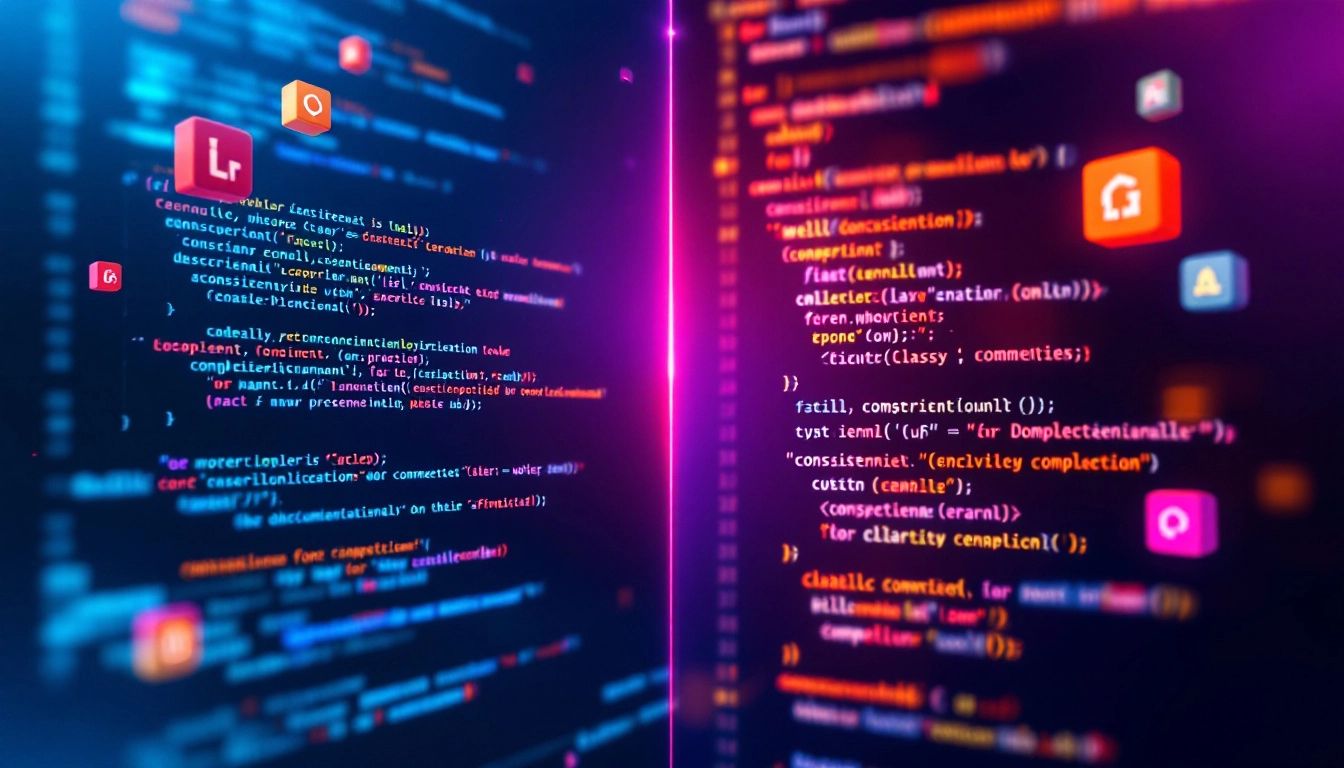Introduction to JavaScript Documentation

In software development, clear and concise documentation is essential. This is particularly important for JavaScript, a language that forms the backbone of a significant portion of the web. Documentation is crucial for JavaScript developers of all skill levels, from those just starting out to experienced professionals working on intricate projects.
Imagine trying to explore a new city without a map or a guide. That’s what it’s like trying to make sense of software without proper documentation. JavaScript documentation acts like a roadmap, highlighting the intricacies of the code and guiding developers through its functionalities.
Well-written JavaScript documentation serves several key purposes:
- Understanding How Code Works: It clearly explains what each function, class, and module does, helping developers understand their purpose and how to use different parts of the code.
- Collaboration and Maintenance: In a team setting, documentation helps everyone understand the project in the same way, encouraging collaboration. It also makes future maintenance and updates much easier, even if the original developers are no longer available.
- Helping New Developers: Jumping into a new codebase can be overwhelming. Thorough documentation makes the process easier for new team members by giving them a clear understanding of the project’s structure and coding conventions.
Without proper JavaScript documentation, code can become difficult to understand, maintain, and build upon. This can lead to confusion, errors, and wasted time and effort. Documentation is an investment in the long-term success of any project.
Types of JavaScript Documentation
Just as a well-written novel needs chapters and a good cookbook needs sections, JavaScript documentation comes in different forms, each with a specific purpose. Let’s take a look at some common types:
1. Inline Comments
These are the foundation of code documentation. Inline comments exist directly within your JavaScript files, right next to the code they’re explaining. They are usually short explanations of what a particular line or section of code does.
For example, you might see:
// This function calculates the area of a rectangle
function calculateArea(width, height) {
return width * height;
}
While simple, inline comments are essential for understanding the thought process behind individual parts of the code.
2. README Files
Think of README files as the introduction to your JavaScript project. They give a general overview of the project, explaining its purpose, how to set it up, and how to use it. README files are usually written in Markdown, a simple formatting language that makes it easy to structure text and add code examples.
A well-written README is invaluable, providing a clear starting point for anyone wanting to understand and use a JavaScript library or project.
3. API Documentation
When you’re creating reusable components or libraries in JavaScript, API documentation is essential. This documentation goes into detail about the functions, classes, and methods that make up your code, explaining how other developers can use them.
Imagine ordering food through an app. The app’s API documentation would be like the menu, showing all the available dishes (functions) and options (parameters) you can choose from.
These are just a few examples of JavaScript documentation. Choosing the right type depends on your project and what you need to communicate. As you become more experienced, you’ll learn how each type contributes to building better software.
Best Practices for Writing JavaScript Documentation

Understanding different types of JavaScript documentation is only half the battle; writing it effectively is the other half. Here are some best practices to make sure your documentation is excellent:
1. Be Clear and Concise
Imagine a recipe full of jargon and unnecessary details. You’d probably give up before even starting! It’s the same with code documentation. Use simple language, avoid technical terms if possible, and get straight to the point.
2. Consider Your Audience
Are you writing for beginners or seasoned JavaScript developers? Adjust your language and detail accordingly. Think about what your audience needs to know to understand and effectively use your code.
3. Use Practical Examples
Examples are incredibly helpful for developers. Show how functions and classes are used in realistic scenarios. Include clear code examples that demonstrate their functionality. A good example can be far more effective than trying to explain something in words.
4. Maintain Consistency
Just as you wouldn’t want a website with mismatched fonts and colors, your JavaScript documentation should have a consistent style and structure. This makes it easier to read and helps developers find information.
5. Document Regularly
Don’t wait until the end of a project to write documentation. Make it a regular part of your development process. Document your code as you write it, making sure it stays updated with any changes.
6. Test Your Documentation
Like code, documentation can benefit from testing. Ask other developers to review your documentation to ensure it’s clear, accurate, and thorough. A fresh pair of eyes can catch mistakes you might have missed.
Good JavaScript documentation is an investment. By following these practices, you’re creating a valuable resource for yourself, your team, and anyone who uses your code.
Tools and Libraries for JavaScript Documentation
Writing JavaScript documentation doesn’t have to be tedious. Thankfully, many tools and libraries can make the process easier and help you create professional documentation.
The Impact of Good Documentation on Project Success

Good JavaScript documentation is more than just a task to check off your list—it’s essential for successful software projects. Effective documentation leads to smoother workflows, better collaboration, and ultimately, a higher-quality product.
Think of documentation as a conversation between your code, your team, and yourself in the future. It bridges the gap between complex programming logic and human understanding, ensuring that everyone is on the same page.
Clear Benefits of Good JavaScript Documentation:
- Higher Code Quality: Well-documented code is easier to understand and review. This results in fewer errors, making the code easier to maintain and more robust.
- Better Collaboration: In teams, JavaScript documentation serves as a single reference point, promoting consistent coding and reducing the chance of miscommunication or confusion.
- Easier Maintenance: When code is well-documented, other developers (or even you in the future!) can quickly grasp how it works and make updates or changes without spending hours trying to decode it.
- Faster Onboarding: Comprehensive documentation makes it easier for new team members to learn the project, allowing them to contribute more quickly.
Investing in good documentation is beneficial throughout the entire software development process. It reduces technical debt, improves code reusability, and allows developers to focus on innovation instead of struggling with poorly documented code.
Future Trends in JavaScript Documentation

The field of JavaScript documentation is constantly evolving, driven by the need to make things easier and more efficient for developers. Looking ahead, several trends are likely to shape how we document JavaScript:
1. AI-Powered Documentation
Imagine AI helping to write, update, and even translate your JavaScript documentation. This is no longer a futuristic idea—it’s becoming a reality. AI tools can analyze code, find missing documentation, and suggest improvements.
This doesn’t mean AI will replace human writers, but it will become more important in automating tedious tasks and improving the quality and consistency of documentation.
2. Interactive Documentation
Static documentation is becoming a thing of the past. The future is interactive documentation that allows developers to experiment with code, test APIs, and get instant feedback. This hands-on approach makes learning much more engaging and effective.
We can expect to see more documentation websites including features like code sandboxes, live demos, and even game-like tutorials to make learning more enjoyable.
3. Automated Documentation Generation
Manually writing documentation can be time-consuming and prone to errors. Automated documentation tools are becoming more advanced, allowing developers to automatically generate API references, code examples, and keep documentation aligned with their code.
This shift toward automation allows developers to focus on what they do best: writing code.
4. Documentation as a Service (DaaS)
Just as software as a service (SaaS) has changed how we use software, documentation as a service (DaaS) is set to change how we handle documentation. DaaS platforms provide a central place to store, manage, and share documentation, making it easier for teams to collaborate and maintain consistency.
5. Focus on Accessibility and Inclusivity
As the tech industry works toward greater inclusivity, we can expect a stronger focus on making documentation accessible to everyone, regardless of their background, experience, or abilities. This includes using clear language, providing alternative formats like video tutorials or audio descriptions, and offering documentation in multiple languages.
The future of JavaScript documentation is bright, driven by innovation and a focus on improving the lives of developers. Tools like DocuWriter.ai are at the forefront of this change, offering AI-powered solutions to streamline and improve documentation.
Want to be a part of the future of documentation? Try DocuWriter.ai today and see how it can improve your workflow! https://www.docuwriter.ai/